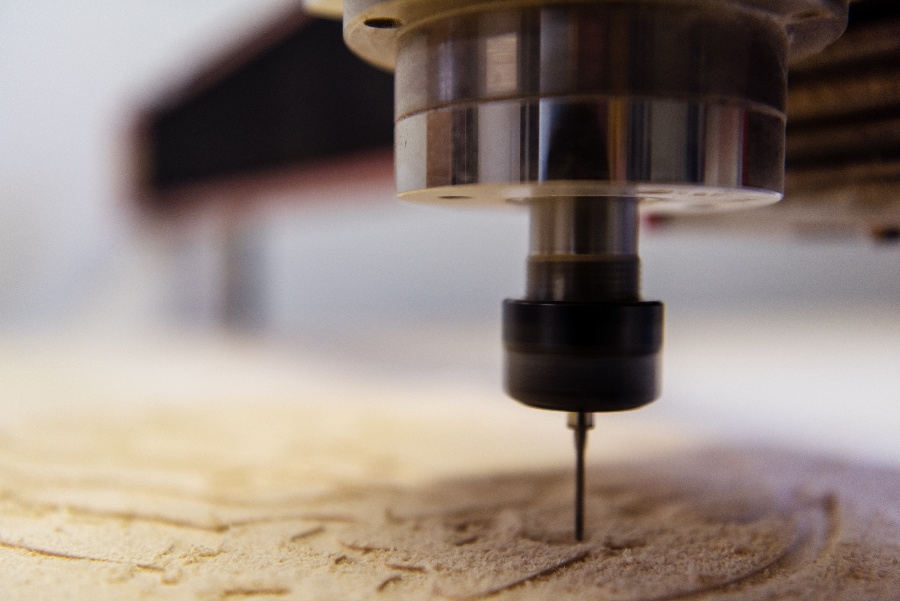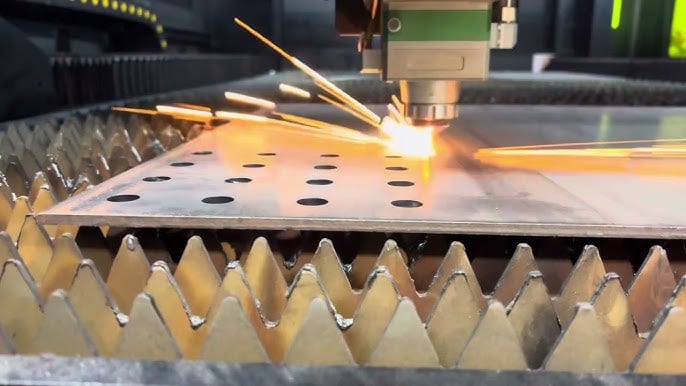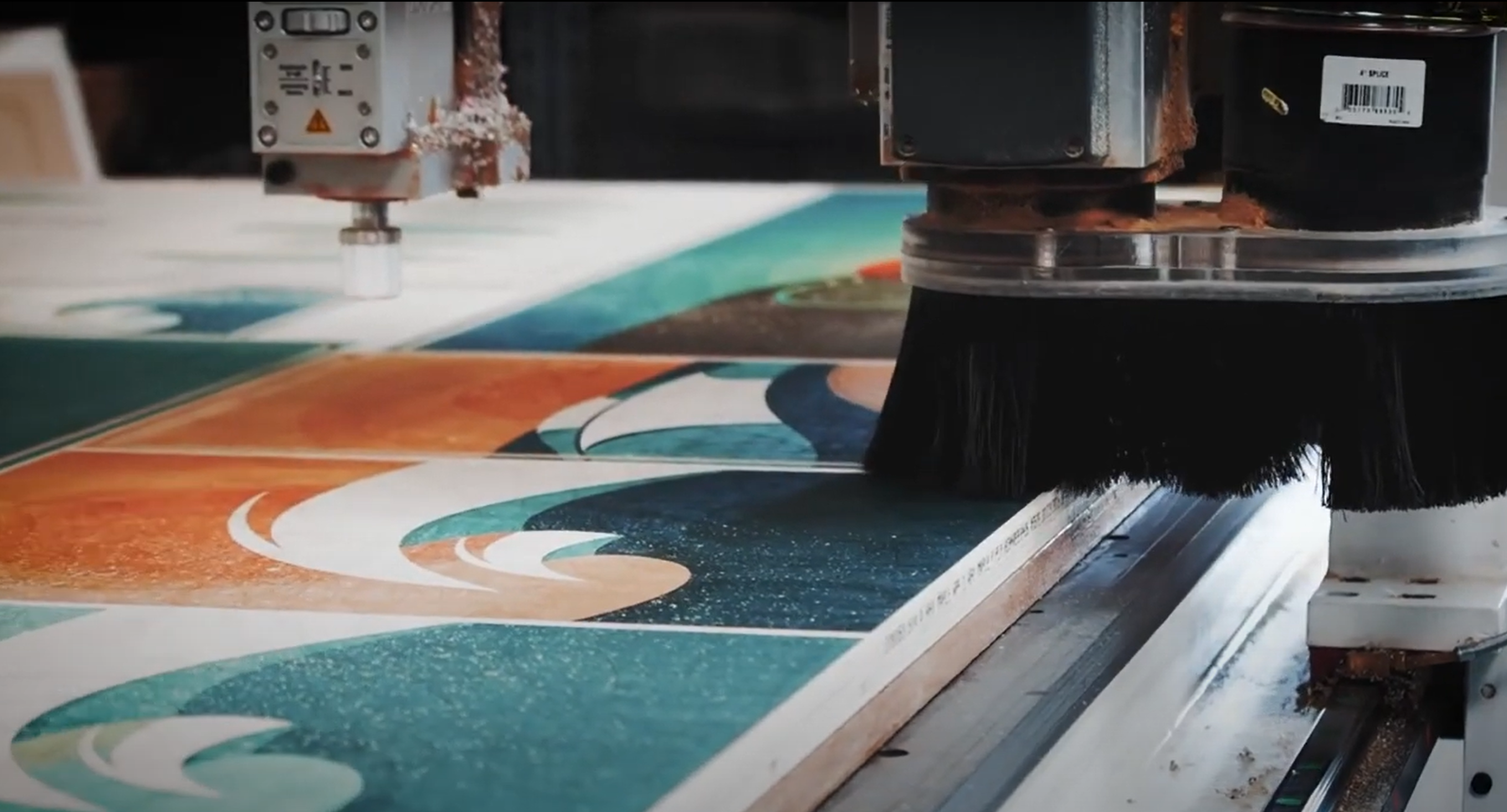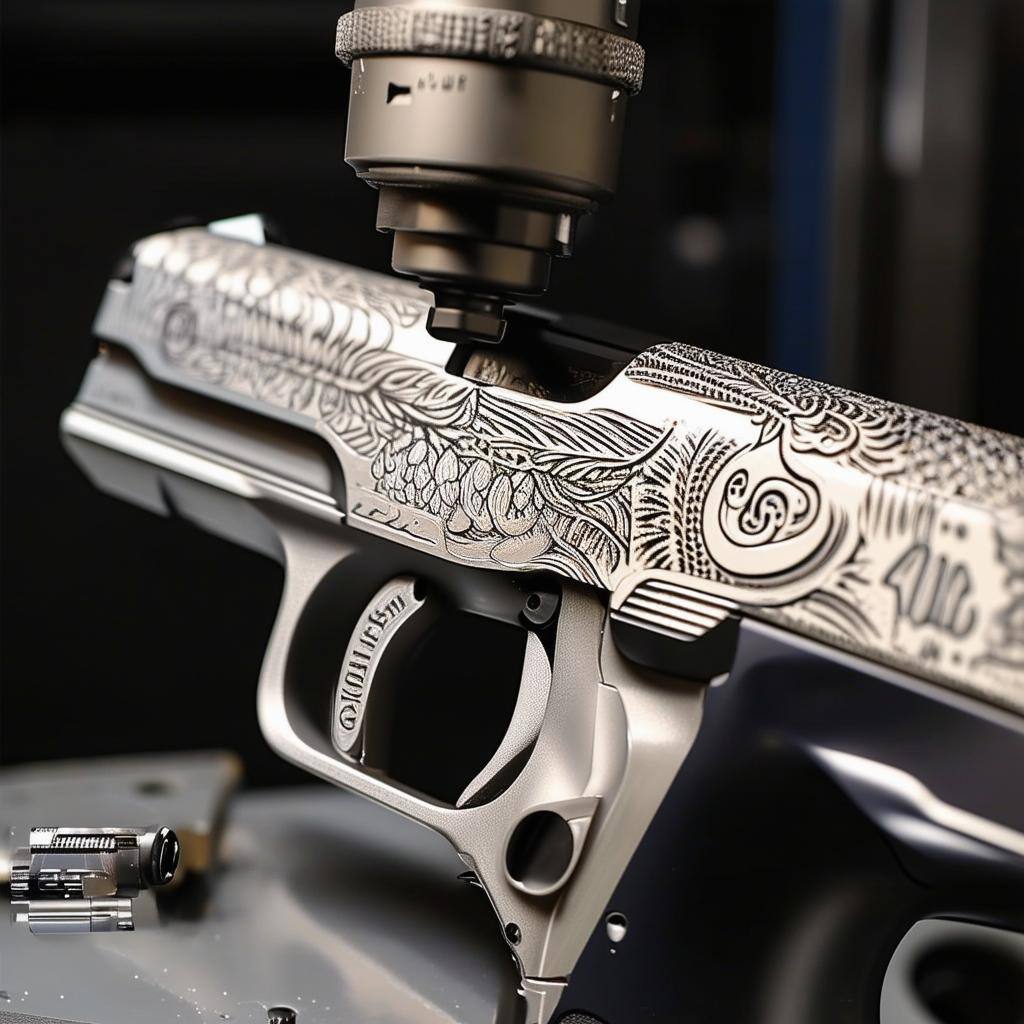Most woodworking shops have variations of the machinery found in the typical metal shop. Yet, when most people hear the term “CNC machinery,” their thoughts often turn only to metal, as in machine shops and metal fabricators.
But today’s woodshops also have access to CNC turners, routers, and milling machines that can produce a wide variety of wood products.
For example, CNC turners can make practically anything from spindles to baseball bats while adding intricate designs at the same time.
The beauty of these machines is that they take only minutes to program and set up, and, once that’s completed, they can run unattended for hours, freeing up valuable shop labor for other productive tasks.
Just a quick review:
Computer numerical control (CNC) is a programmed code that contains the instructions for the movements of a machine. The code defines feeds, speeds, and directions to transform a virtually-drawn object into an actual three-dimensional part automatically.
The CNC machine works together with a computer that’s loaded with software. It takes the numerical codes and converts them into Cartesian coordinates, allowing the CNC to create parts with an exceptional degree of precision and repeatability.
CNC machinery has enhanced some professions and made others obsolete
Does anyone remember the wood patternmaker? In case you don’t, let me remind you that these were arguably some of the most talented and creative woodworkers of their time.
The pattern makers that are referred to here did an exact and specialized type of woodworking. They created wooden patterns for sand casting iron and other metals using various hand tools, sanders, and templates.
Today, this trade is nearly extinct. Even though patterns are still used for casting, they are made in several ways, mostly using 3D models that originated from a CAD file.
While wood pattern making is one example of a trade that was “killed off” by automation, there are plenty of other cases in which CNC has provided benefits to an entire industry.
Let’s begin with the most common piece of CNC equipment found in a woodshop in 2020:
CNC routers have become a mainstay in wood shops
Multi-tool CNC routers are making businesses more productive and profitable, and the affordable desktop models have become wildly popular with hobbyists.
They can engrave or etch a surface, carve out a design, or produce almost any shape. Powerful CAD and CAM software provide the tools to turn an idea into a drawing, set up the tool paths, and create a finished object.
It’s becoming much easier to get into CNC routing: With everything from inexpensive starter models, on which to learn and improve, up to the largest production routers, which can turn out all the doors for a kitchen with one setup, there is a router for every need.
Here are just a few of the applications that professionals could consider for a CNC router:
- Cabinet Making: Routers are an excellent choice for everything from shelves to cabinet doors
- Sign Making: Signs are often complicated, but because of their simultaneous 3-axis motion, CNC routers can machine 3D and other sophisticated designs quite easily.

Photo credit - Lazy River Studio
- Musical instruments and general woodworking: In the past, woodworking was seen exclusively as a hands-on activity. Today, CNC routers are saving time without sacrificing quality, even in the body, neck, inlays, and fretwork of musical instruments.

Photo credit - Wood Jigsaw Puzzle
- Rapid Prototyping: CNC routers can provide a working model in minutes, compared to the many hours it took to complete a hand-carved prototype. And making design revisions is much easier now with a few edits in the program.
Most pros (and many hobbyists) will also need a CNC “woodturner”
If you’re familiar with traditional metal and woodturning machines, it might seem strange to call theses CNC turners “lathes.” That’s because they don’t act like a lathe, even though the resulting parts may be similar to those that come off the lathe. But that’s where the similarities end.
It’s a rotary indexing head that allows a CNC turner to produce 3-dimensional shapes in the round. So, while this rotary indexing head looks much like a regular woodturning lathe, it takes a much different approach to shape wood. In fact, it’s closer to milling than it is to turning in that one can produce shapes that aren’t possible on a standard wood lathe.
Check out these amazing YouTube videos to see just some of the possibilities that are available with these CNC turners.
Is there room for the little guy in CNC woodworking?
The short answer is a resounding, “Yes!” There are plenty of opportunities for those who are looking for a full-time career or a part-time gig.
Many of these are the smaller jobs that the “big guys” don’t want to do. Making signs and relief pictures in wood, for instance, would be one way to get started in your enterprise, and with an affordable CNC router, you would be competitive in both price and quality.
If signs aren’t exciting enough for you, maybe some custom carving on cabinet doors suits you better.
Homeowners love to update their kitchens and bathrooms, and you could supply them with door panels that include graphics, drawings, or any other images that would give clients something unique. You might even want to consider wholesaling your service to other existing cabinet shops.
To take it one step further, adding a CNC turner would give you even more opportunities for business. You could take those same ideas from the cabinet doors and transfer them to products such as spindles and chair legs.
Looking for some woodworking projects to get your feet wet?
You probably don’t want to start with anything too complex, so here are a couple of projects to get you up and running before you get into the serious stuff:
You can find the plans for the “Parametric Circle Cubby” (shown below) on the Inventables website.

Photo credit to inventables.com.jpg
Finally, take a look at this video for making a picture frame.
These project samples and ideas are just a jumping off point. Use your imagination and a CNC woodworking machine to start creating some real works of art and perhaps make some money in the process!




